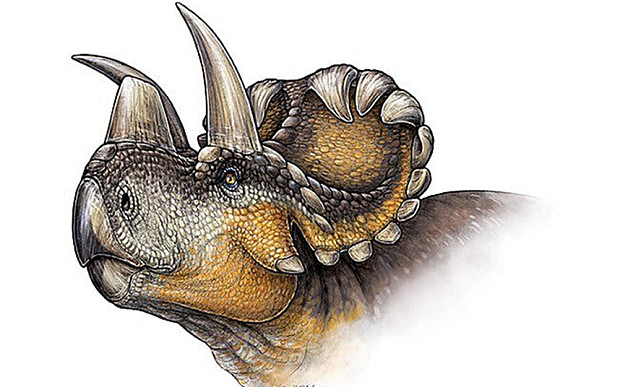-
Tips for becoming a good boxer - November 6, 2020
-
7 expert tips for making your hens night a memorable one - November 6, 2020
-
5 reasons to host your Christmas party on a cruise boat - November 6, 2020
-
What to do when you’re charged with a crime - November 6, 2020
-
Should you get one or multiple dogs? Here’s all you need to know - November 3, 2020
-
A Guide: How to Build Your Very Own Magic Mirror - February 14, 2019
-
Our Top Inspirational Baseball Stars - November 24, 2018
-
Five Tech Tools That Will Help You Turn Your Blog into a Business - November 24, 2018
-
How to Indulge on Vacation without Expanding Your Waist - November 9, 2018
-
5 Strategies for Businesses to Appeal to Today’s Increasingly Mobile-Crazed Customers - November 9, 2018
New Dinosaur With Halo Of Horns Found in Canada
Wendiceratops may have been one of the earliest horned dinosaurs to have a prominent nasal horn – indicating that the horns formed separately in two different evolutionary branches of dinosaur. Its most distinctive feature is a series of forward-curling hook-like horns along the margin of the wide, shield-like frill that projects from the back of its skull. While Wendiceratops had similar horns above its eyes, its nose horn appears to have been somewhat blunted, meaning that it was most likely not used as a weapon to defend itself against predators (eg: tyrannosaurs).
Advertisement
During the last few million years of the Cretaceous period, leading up to the extinction of dinosaurs about 65 million years ago, species in the ceratopsian group evolved rapidly, developing many variations of their facial horns.
“Horned dinosaurs were social animals”, said Evans, pointing out that many of their fossils come from bone beds consisting of large numbers of individual dinosaurs.
It was named after its discoverer, Wendy Sloboda who is a famous fossil hunter that over the past 30 years has made hundreds of discoveries.
The new species of horned dinosaur was described in details in the scientific journal PLOS ONE.
Life in a herd means Wendy would have been subject to the social pressures of mating displays and holding off rivals, tasks for which horns are well suited. “The locked horns of two Wendiceratops could have been used in combat between males to gain access to territory or females”, added by research co-author Michael Ryan.
Study co-author Michael Ryan of the Cleveland Museum of Natural History says that, “Wendiceratops has a unique horn ornamentation above its nose that shows the intermediate evolutionary development between low, rounded forms of the earliest horned dinosaurs and the large, tall horns of Styracosaurus, and its relatives”.
“Usually it’s the second name they name after you”, she said, “but the first one, that’s the exciting part”.
Sloboda called it “a big honor” to have a new dinosaur species named after her, according to CBC News. “She just has a sixth sense for it. We often joke that we are Wendy’s cleanup crew”. While most of these species are described from very limited fossil material, Wendiceratops is represented by over 200 bone fragments from all parts of the skeleton, including the skull – making it a highly important find. “We are in a golden age of dinosaur discovery here in Canada and we’re not plateauing yet”. In all, they moved many tons of rock.
Unlike any other dinosaur, this creature’s skull is ringed with bone protrusions that curl inward toward the animal’s nose like gnarly crochet hooks.
Advertisement
A native of southern Alberta, Sloboda started searching for – and finding – dinosaur fossils as a child with her family.





























